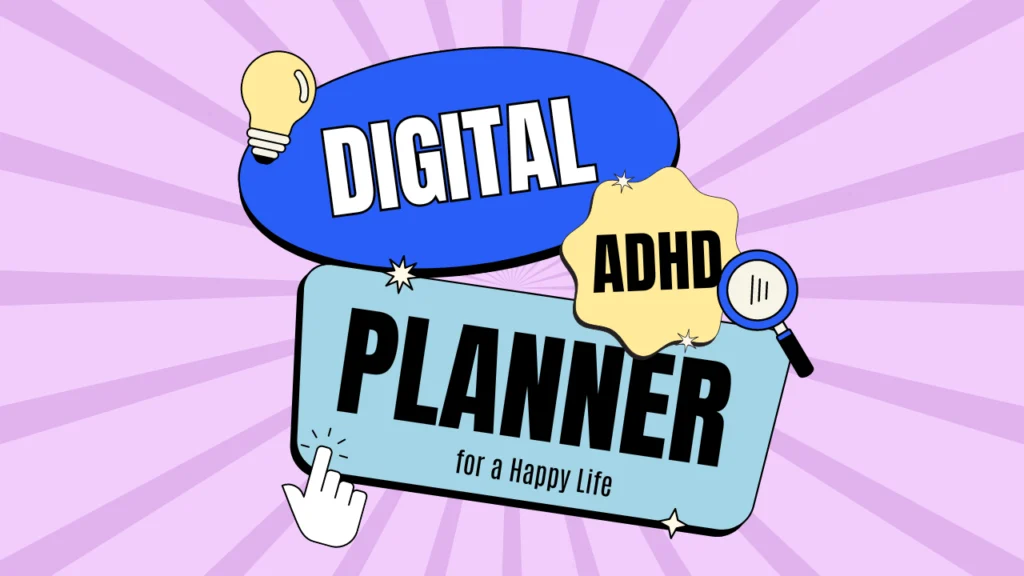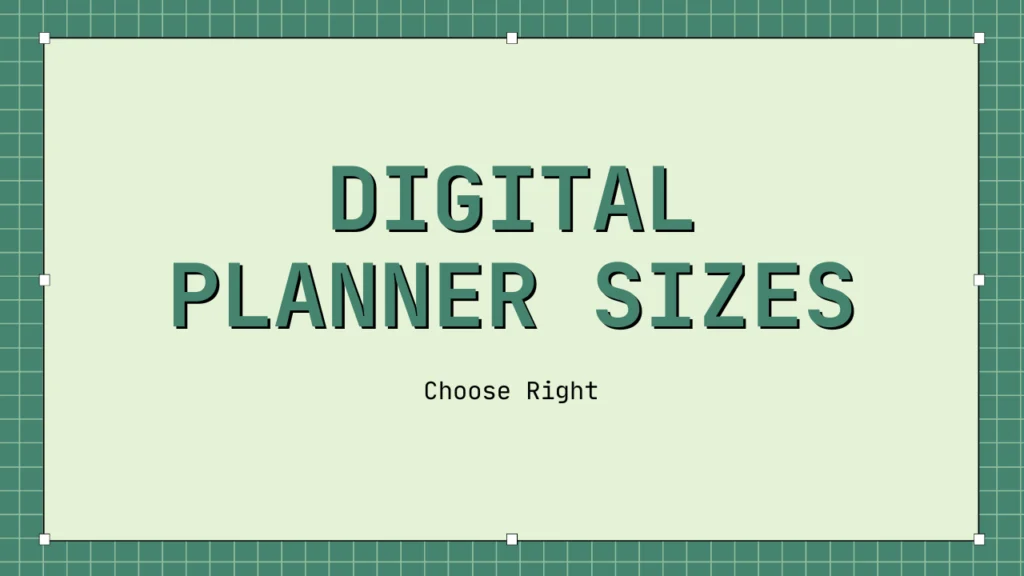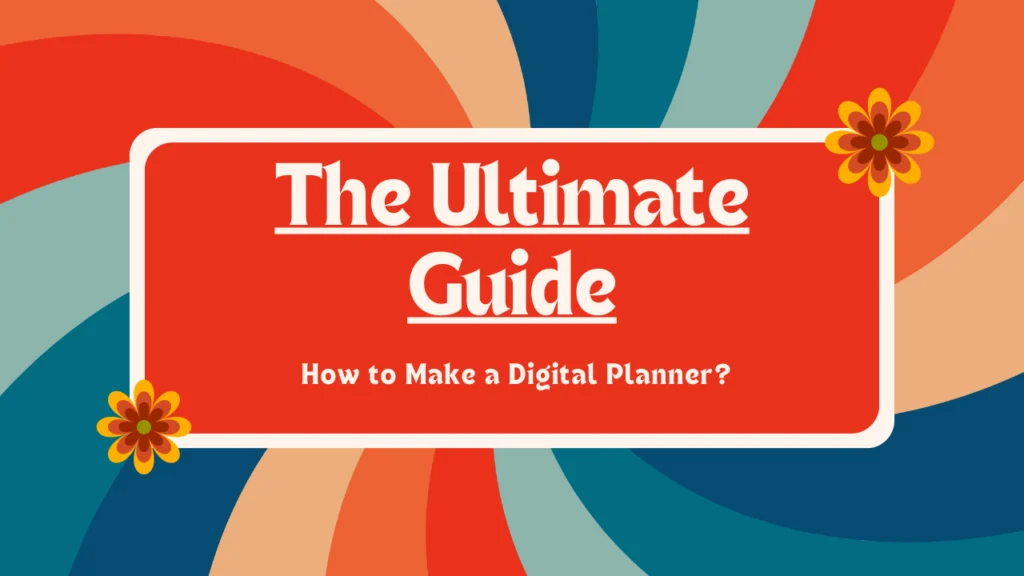
Table of Contents
ADHD Digital Planner Introduction
ADHD, or Attention Deficit Hyperactivity Disorder, presents unique challenges when it comes to organization and time management. However, advancements in technology have led to the development of digital planners specifically designed to cater to the needs of individuals with ADHD. These digital planning tools offer a range of features and customization options that enhance focus and organization. In this blog post, we will explore how ADHD-friendly digital planners address the challenges faced by those with ADHD and provide tips for maximizing their effectiveness.
Understanding ADHD Challenges
ADHD is characterized by symptoms that often impact the ability to stay organized and manage time effectively. From difficulties with task initiation and prioritization to struggles with maintaining focus, individuals with ADHD face a range of challenges in their day-to-day lives. To better understand these struggles, let’s delve deeper into some common symptoms.
A. Brief overview of ADHD symptoms affecting organization and time management
ADHD symptoms can manifest as forgetfulness, impulsivity, and distractibility, leading to disorganization and time management difficulties. Individuals with ADHD often struggle with keeping track of tasks, meeting deadlines, and maintaining a structured routine. This can result in increased stress levels and decreased productivity.
B. Personal anecdotes or case studies illustrating common struggles
To highlight the real impact of ADHD on organization and time management, let’s consider a personal anecdote. Sarah*, a college student with ADHD, consistently found herself missing assignment deadlines and forgetting important meetings. This led to feelings of frustration and self-doubt. Sarah’s struggles are not unique; many individuals with ADHD face similar challenges in various aspects of their lives, whether at school, work, or in personal relationships.
C. The role of technology in addressing ADHD challenges
Technology has become an invaluable tool for individuals with ADHD, providing innovative solutions to overcome challenges. Digital planners, in particular, offer a promising avenue for enhancing organization and time management skills. Let’s explore the benefits that these digital planning tools bring to individuals with ADHD.
Benefits of Digital Planning for ADHD
Digital planning tools designed specifically for individuals with ADHD offer a host of benefits that traditional planner formats may not provide. These tools are equipped with features tailored to address the unique needs of those with ADHD, enabling better focus, organization, and productivity.
A. Overview of digital planning tools designed for ADHD users
ADHD-friendly digital planners are thoughtfully designed with the user in mind. They offer a range of features aimed at promoting structure, productivity, and focus. These tools leverage technology to enhance the planning experience and meet the specific needs of individuals with ADHD.
B. Customizable features tailored to ADHD needs
One key advantage of digital planners is their ability to be customized to suit individual preferences and ADHD challenges. Users can personalize their planners by choosing layouts, themes, and color schemes that resonate with them. This customization empowers individuals with ADHD to create a planner that not only helps them stay organized but also brings them joy and motivation.
C. Integration with ADHD-friendly strategies (e.g., time blocking, reminders)
Digital planners can seamlessly integrate ADHD-friendly strategies, such as time blocking and reminders, into the planning process. Time blocking allows individuals to allocate specific time slots for different tasks or activities, reducing the chance of becoming overwhelmed or distracted. Reminders help individuals stay on track by providing notifications for upcoming deadlines or appointments.
Key Features of ADHD Digital Planners
ADHD digital planners come packed with features that specifically target the challenges faced by individuals with ADHD. These features enhance organization, improve productivity, and combat procrastination.
A. Visual and intuitive interfaces
Digital planners boast visual and intuitive interfaces that make navigating and planning effortless. Color-coded categories, easily identifiable icons, and clean layouts contribute to a seamless planning experience, minimizing confusion and maximizing focus.
B. Reminders and notifications for tasks and deadlines
One of the standout features of digital planners for ADHD is their ability to send reminders and notifications for tasks and deadlines. These alerts help individuals stay on track and prevent important tasks from slipping through the cracks.
C. Goal-setting and progress tracking features
Setting goals is an essential component of effective planning, and digital planners excel in this area. They offer goal-setting features that assist individuals with ADHD in defining their objectives and tracking their progress. This provides a sense of accomplishment and motivation to continue striving towards their goals.
D. Time management tools to combat procrastination
Procrastination can significantly hinder productivity for individuals with ADHD. Digital planners combat this issue by incorporating time management tools, such as timers and countdowns, which promote a sense of urgency and encourage task completion.
Personalization and Flexibility
The beauty of digital planners lies in their ability to adapt to individual preferences and address specific ADHD challenges. Here, we explore how personalization and flexibility contribute to an enhanced planning experience for individuals with ADHD.
A. Customizable layouts to suit individual preferences
Digital planners offer a wide range of customizable layouts to cater to individual preferences. Whether someone prefers a clean and minimal design or a more vibrant and detailed layout, digital planners have options for everyone. This personalization aspect allows individuals to create a planner that aligns with their unique organizational style.
B. Tailoring digital planners to specific ADHD challenges
Individuals with ADHD face different challenges, and digital planners can be tailored to address these specific needs. From incorporating features targeted at working memory deficits to integrating strategies for managing impulsivity, digital planners can be customized to provide the necessary support for individuals with ADHD.
C. Syncing with other devices for accessibility
In today’s interconnected world, accessibility is key. Digital planners can sync with various devices, such as smartphones, tablets, and computers, ensuring that individuals can access their planners whenever and wherever they need them. This flexibility promotes consistent planning and organization.
B. Quantifiable improvements in focus, productivity, and organization
Research studies and testimonials consistently demonstrate quantifiable improvements in focus, productivity, and organization among individuals with ADHD who adopt digital planners. These tools prove to be effective aids in managing ADHD symptoms and enhancing overall well-being.
Tips for Maximizing Effectiveness
While ADHD digital planners offer a multitude of benefits, optimizing their effectiveness requires certain strategies and mindful habits. Let’s delve into some tips that can help individuals with ADHD make the most out of their digital planning experience.
A. Setting realistic goals and priorities
It’s important for individuals with ADHD to set realistic goals and priorities when utilizing digital planners. By breaking down larger tasks into manageable chunks and focusing on essential priorities, individuals can prevent overwhelm and maintain a sense of accomplishment.
B. Utilizing features like color-coding and categorization
Digital planners provide various features like color-coding and categorization that can aid in organization and prioritization. By assigning specific colors or categories to different tasks or activities, individuals can visually distinguish between them, thereby improving focus and clarity.
C. Incorporating mindfulness and breaks into the digital planning routine
Mindfulness and breaks are crucial aspects of maintaining focus and mental well-being. Individuals with ADHD can incorporate short mindfulness exercises and regular breaks into their digital planning routine. This practice allows for relaxation, increased self-awareness, and ultimately supports better overall productivity.
Overcoming Potential Drawbacks
While the benefits of ADHD digital planners are numerous, it’s essential to address potential drawbacks and implement strategies to overcome them effectively.
A. Addressing concerns about screen time and digital fatigue
Excessive screen time can contribute to digital fatigue and strain on the eyes, potentially exacerbating ADHD symptoms. To address this concern, individuals should incorporate regular breaks from screens and engage in activities that encourage physical movement and eye rest.
B. Strategies for maintaining motivation and consistency
Maintaining motivation and consistency with digital planning may be challenging for individuals with ADHD. Strategies such as setting reminders to review the planner regularly, celebrating achievements, and seeking support from peers or professionals can help overcome these challenges and stay committed to the planning routine.
Future Developments in ADHD Digital Planning
The world of technology is continuously evolving, and this holds true for ADHD-friendly digital planning tools. Let’s explore potential future developments and innovations that could shape the landscape of ADHD digital planners.
A. Emerging technologies and innovations in ADHD-friendly apps
As technology progresses, we can expect to see exciting innovations in ADHD-friendly apps. These may include advanced features like machine learning algorithms that personalize the planning experience based on individual needs, or integration with wearable devices to capture data on stress levels and focus.
B. The role of user feedback in shaping future features
User feedback plays an integral role in refining and enhancing digital planning tools. The invaluable insights and suggestions provided by individuals using ADHD digital planners can guide developers in creating features that address specific needs and promote continued growth and success in managing ADHD symptoms.
Conclusion
ADHD digital planners have proven to be a game-changer for individuals struggling with organization and time management. Through their customizable features, integrations with ADHD-friendly strategies, and focus on personalization and flexibility, these digital planners offer a transformative planning experience. So, if you’re someone with ADHD looking to enhance your focus, productivity, and organization, don’t hesitate to explore and embrace the world of digital planning. As technology evolves, we can look forward to even more innovative solutions that support the management of ADHD and improve the lives of individuals facing these challenges.

